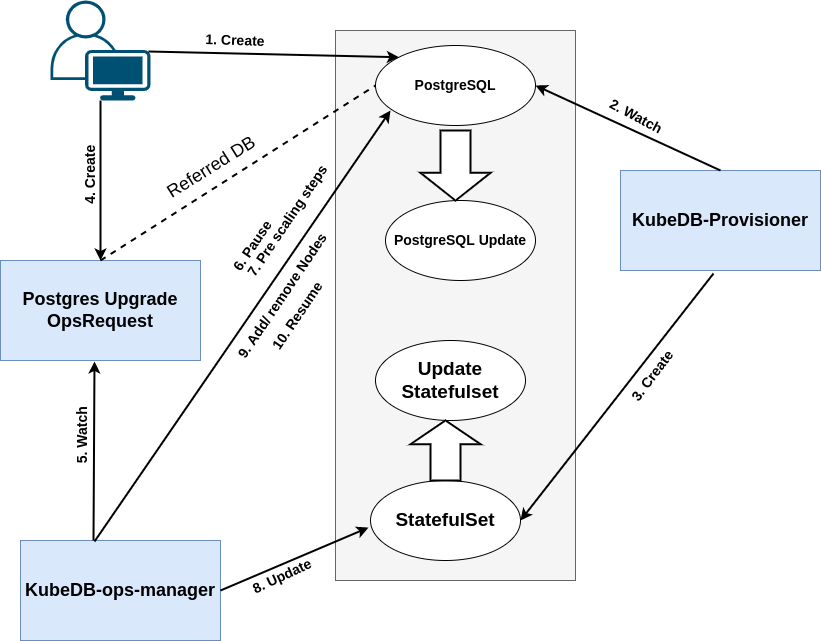You are looking at the documentation of a prior release. To read the documentation of the latest release, please
visit here.
New to KubeDB? Please start here.
Horizontal Scaling Overview
This guide will give you an overview of how KubeDB Ops Manager scales up/down the number of members of a Postgres instance.
Before You Begin
- You should be familiar with the following
KubeDBconcepts:
How Horizontal Scaling Process Works
The following diagram shows how KubeDB Ops Manager used to scale up the number of members of a Postgres cluster. Open the image in a new tab to see the enlarged version.

The horizontal scaling process consists of the following steps:
At first, a user creates a
Postgrescr.KubeDBcommunity operator watches for thePostgrescr.When it finds one, it creates a
PetSetand related necessary stuff like secret, service, etc.Then, in order to scale the cluster, the user creates a
PostgresOpsRequestcr with the desired number of members after scaling.KubeDBOps Manager watches forPostgresOpsRequest.When it finds one, it halts the
Postgresobject so that theKubeDBcommunity operator doesn’t perform any operation on thePostgresduring the scaling process.Then
KubeDBOps Manager will add nodes in case of scale up or remove nodes in case of scale down.Then the
KubeDBOps Manager will scale the PetSet replicas to reach the expected number of replicas for the cluster.After successful scaling of the PetSet’s replica, the
KubeDBOps Manager updates thespec.replicasfield ofPostgresobject to reflect the updated cluster state.After successful scaling of the
Postgresreplicas, theKubeDBOps Manager resumes thePostgresobject so that theKubeDBcommunity operator can resume its usual operations.
In the next doc, we are going to show a step by step guide on scaling of a Postgres cluster using Horizontal Scaling.



































